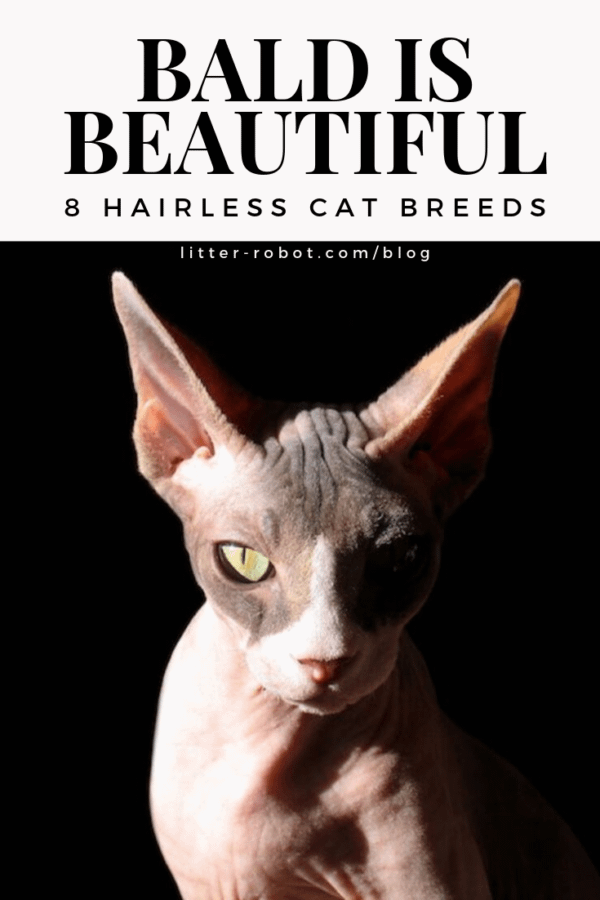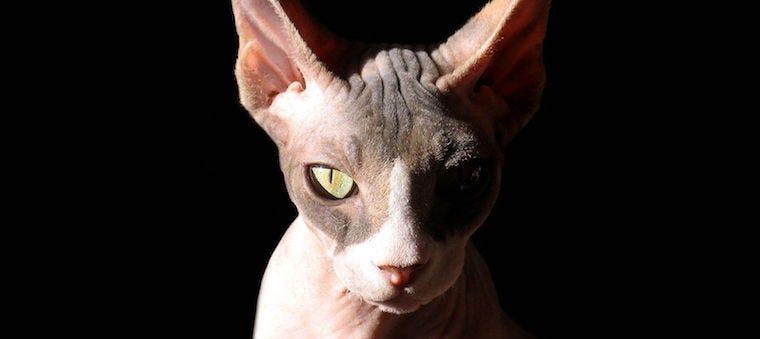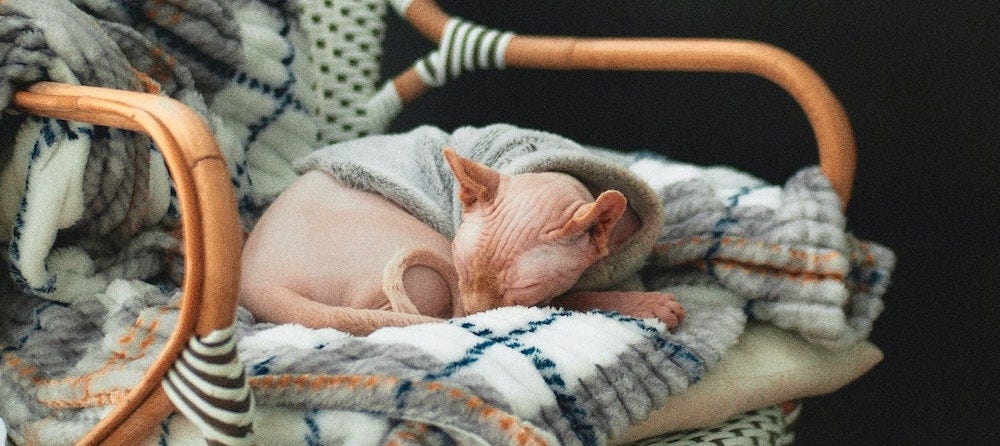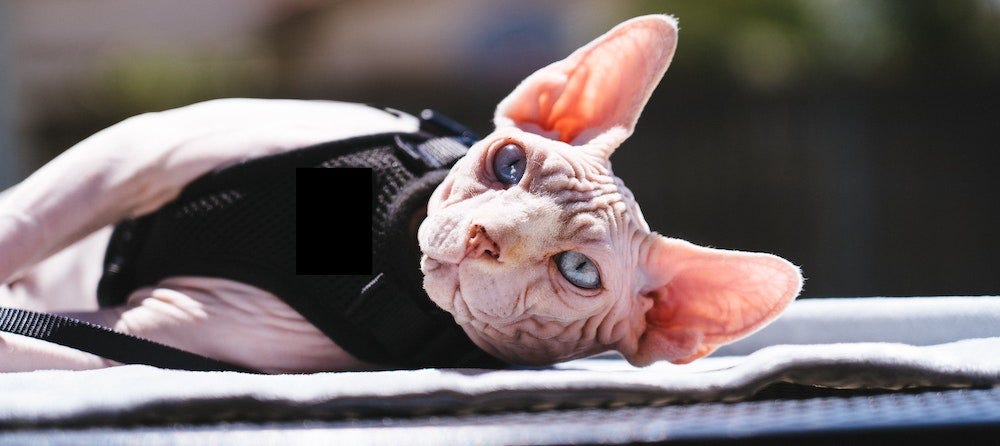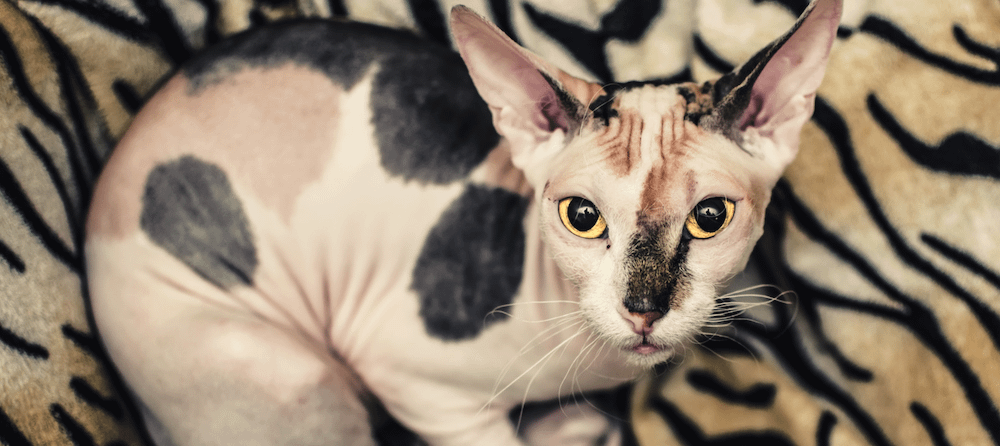Hairless cats inspire everything from delighted awe to morbid fascination in humans. If you ever plan on adopting a hairless cat, we’re honoring the bald and beautiful of the cat world with 8 hairless cat breeds that prove that you don’t need fur to be fabulous. Most people are familiar with the Sphynx cat, but there are many other hairless cat breeds to learn about and—frankly—gawk at.
Why are hairless cats hairless?
You might be wondering, are hairless cats natural? Hairlessness is caused by a natural genetic mutation and can occur in many cat breeds. The hairless cats featured below all share this genetic mutation, although most of them were purposely created by humans through selective cross-breeding.
Can hairless cats grow hair?
Not all hairless cats are completely hairless. Many of them sport peach fuzz or spots of downy fur. One hairless cat breed, the Donskoy or “Don Sphynx,” can even grow a “winter coat” consisting of fine wool on the chest and hairs on the end of the tail, which is shed after the weather warms.
Are hairless cats hypoallergenic?
Hairless cats are not considered hypoallergenic. That is because they still produce the allergen-causing protein Fel d 1 in their saliva, urine, and dander (although they have less dander than cats with fur). In theory, a hairless cat might be a slightly better choice for allergy sufferers than many other cat breeds, due to their minimal production of dander.
Do hairless cats have whiskers?
Many hairless cats, including the popular Sphynx, do not have whiskers or eyelashes. Those that do may sport short or broken whiskers.
Caring for a hairless cat
Many people mistakenly assume that no fur equals no grooming requirements. In reality, hairless cat breeds still require grooming: Instead of brushing the fur, you’ll need to give your cat weekly sponge baths or wipe-downs to remove sebaceous oils from their skin. (This includes scrubbing in-between all of their skin folds.) Cats with fur usually absorb these oils; hairless cats that are not wiped down may feel sticky to the touch and develop skin problems.
Furthermore, your hairless cat needs to be protected from the sun and harsh weather conditions. Talk to your veterinarian about cat-friendly sunscreen, and invest in some cat sweaters for those cold winter days—your kitty is naked, after all!
Sphynx
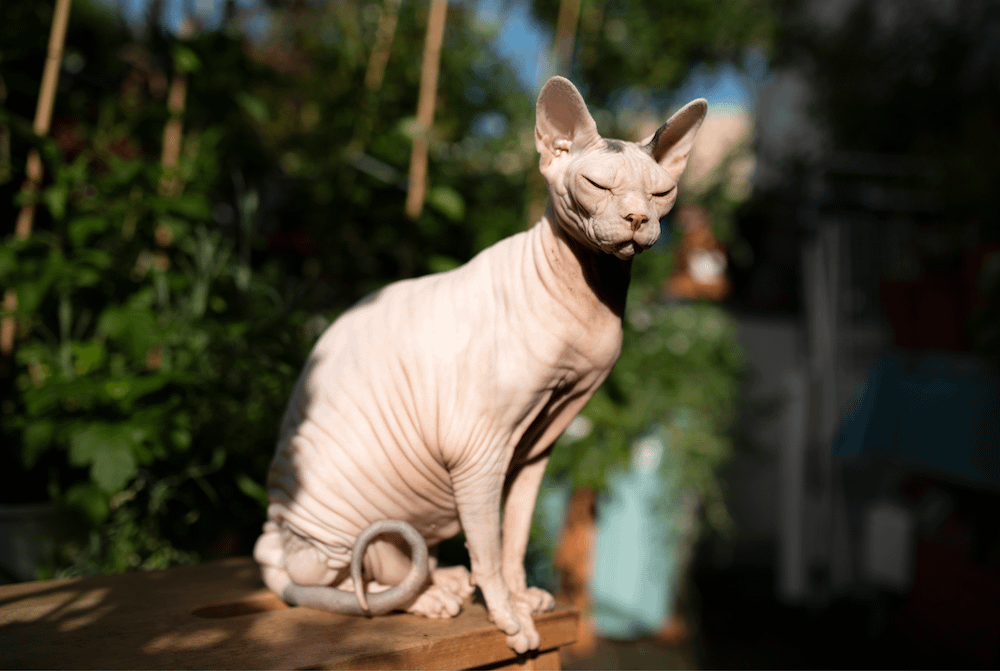
Undoubtedly the most popular hairless cat is the Sphynx cat. In 1966, a black and white cat gave birth to a wrinkled hairless kitten in Ontario, Canada. Named Prune, the kitten was eventually bred to other cats in an attempt to create more hairless kittens. Thus, the Sphynx line began!
Sphynx cats are typically hairless, but may have a fine down on their body. Their skin and any fine hair they may have can present as a variety of colors and patterns. They typically weigh between 6 and 12 pounds, and their distinctive large ears may reach 2-3 inches in height.
The Sphynx cat is known for their highly social, attention-loving, and inquisitive personality. They are affectionate, needy, and not very independent—so if you adopt a Sphynx cat, be prepared to meet their demands.
Donskoy
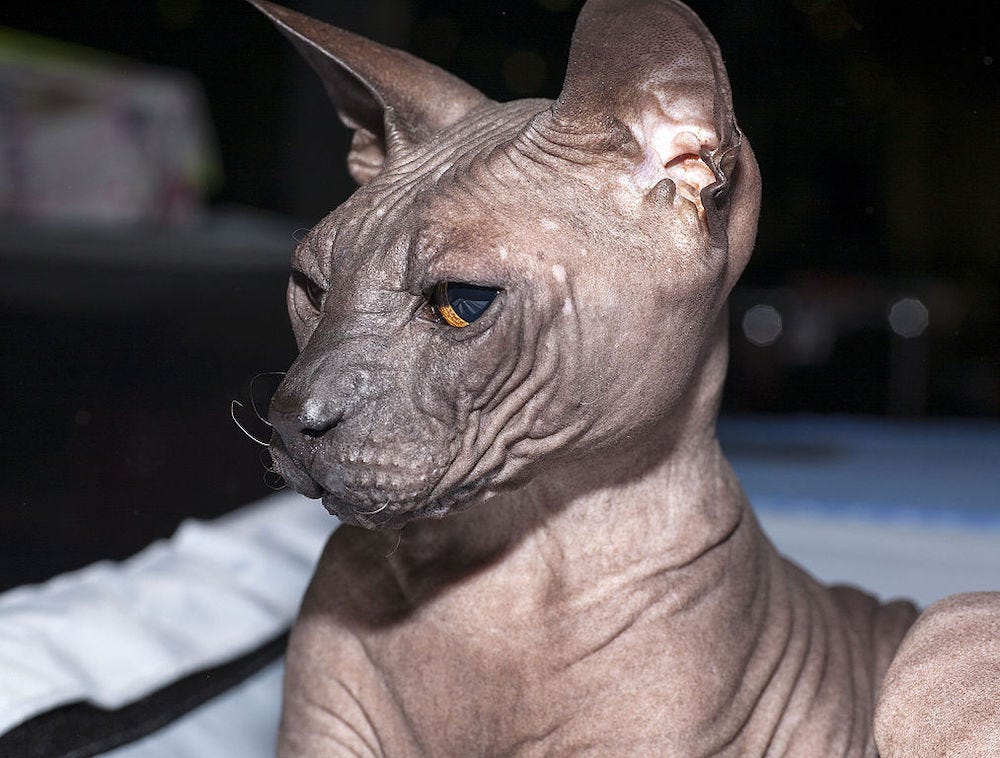
As mentioned earlier, the Donskoy, sometimes called the Don Sphynx, is unique on our list of hairless cat breeds for their ability to grow and shed a coat. The foundational cat of the breed—which was discovered in the city Rostov-on-Don in Russia in 1987—gave birth to kittens both with and without hair. Those with hair began to lose it as they aged.
Sometimes described as “reminiscent of aliens,” the Donskoy has very elastic skin that is hot to the touch. They have pronounced wrinkles on their cheeks, jowls, and under the chin. This breed is intelligent, friendly, and active.
Bambino
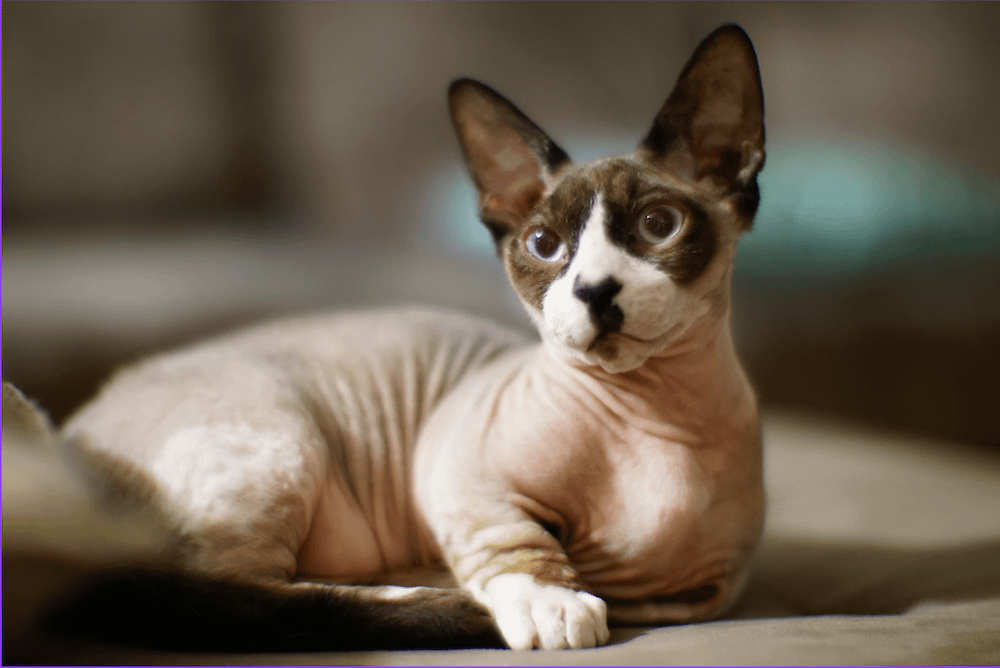
Bambino cats are a cross between a Sphynx and a Munchkin, thus featuring the two trademark characteristics of hairlessness and short legs. Also known as “baby cats,” they typically weigh between 5 and 9 pounds. However, their small size and short legs do not hinder their movement.
Bambinos are friendly and affectionate lap cats. Similar to their parent breeds, they warm up to people right away and love to be cuddled by their family members.
Minskin
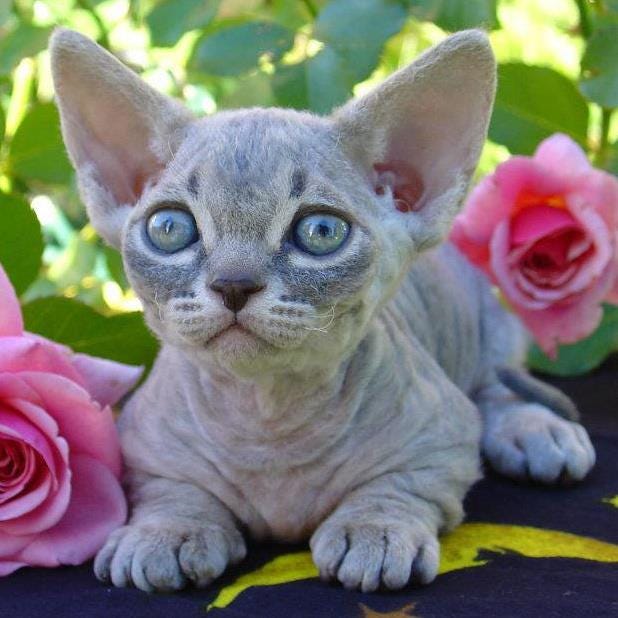
Like Bambinos, the Minskin breed was derived from first crossing Sphynx and Munchkin cats, and later Burmese and Devon Rex cats. At 4 to 6 pounds, Minskins tend to be an even smaller breed, with short legs and patches of fur on some parts of their stocky body. The name “Minskin” comes from a combination of the words “miniature” and “skin.”
Minskin cats are intelligent, playful, and entertaining. They will greet you at the door and love to spend time with everyone in the home, including children and dogs. They are bonafide lap cats and always available for a snuggle.
Dwelf

Another tiny member on our list of hairless cat breeds is the Dwelf, a name that comes from a combination of the words “dwarf” and “elf.” Dwelf cats get their short legs from the Munchkin, their hairlessness from the Sphynx, and their distinctive curled ears from the American Curl.
This breed is reported to be playful, active, and almost dog-like in terms of their personality. At a whopping 4 to 7 pounds, this cat could give Chihuahuas a run for their money any day of the week.
Ukrainian Levkoy

The Ukrainian Levkoy is a recent man-made breed developed by crossing hairless Donskoy females with Scottish Fold males. These hairless cats have distinct, inward-folding ears and a muscular yet slender body. Their soft, elastic skin appears quite wrinkled. They are known for their “dog-face appearance,” with a special angular contour of the head and stepped profile.
The Ukrainian Levkoy is a very sociable yet laid-back cat. They enjoy the company of their human family members as well as other pets in the home.
Peterbald
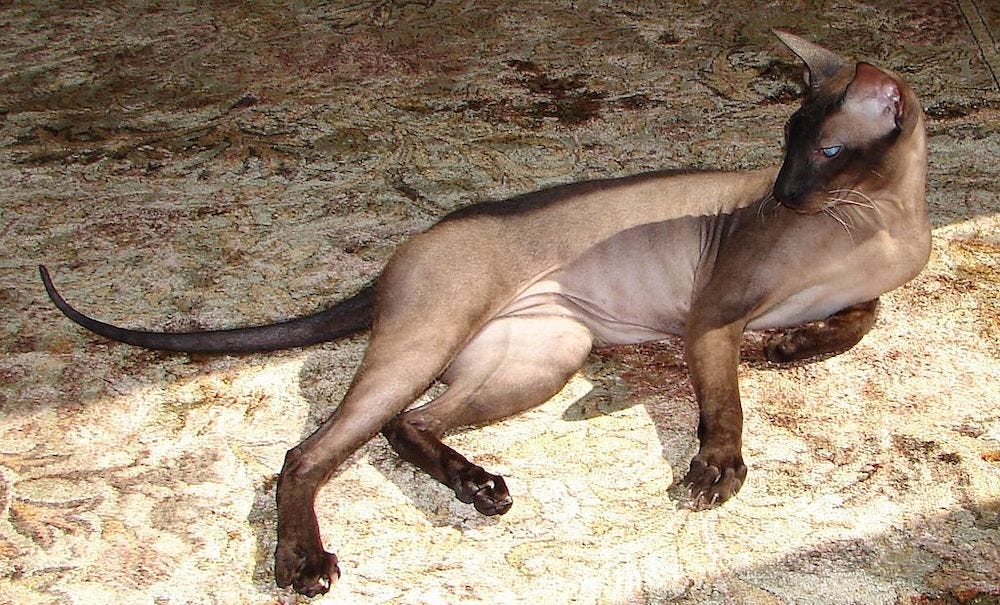
Like many of the breeds on our list, the Peterbald is a rare yet highly desired hairless cat. This breed began when an Oriental Shorthair was bred to a hairless Donskoy cat in 1993. The Peterbald can be totally hairless, have a coat like peach fuzz or a piece of suede leather, or display downy white hair that may appear kinky or wiry.
The Peterbald is a very intelligent and highly vocal lap cat, similar to their Oriental Shorthair parent breed. In fact, they’re known to be almost “aggressively affectionate” and will greet their family and visitors at the door with equal glee.
Lykoi

Although the Lykoi is often only partially hairless, this unique cat deserves a place on our list of hairless cat breeds. The Lykoi’s uncanny looks are derived from a naturally occurring gene in the feral cat population. They were bred to look like a werewolf with their hairless face, leathery skin, and gleaming silvery-black coat.
Lykoi cats retain a strong prey drive and love stalking people, other animals, and, if there are no other options, their toys. Although they sound like scary predators, they are a friendly and playful breed.
Photo credits:
- Donskoy: © Nickolas Titkov / Wikipedia Commons / CC-BY-SA-2.0
- Minskin: © Paulmcsorley / Wikipedia Commons / CC-BY-SA-3.0
- Ukrainian Levkoy: © Nickolas Titkov / Wikipedia Commons / CC-BY-SA-2.0
- Peterbald: © Atlantiscats / Wikipedia Commons / CC-BY-SA-3.0
